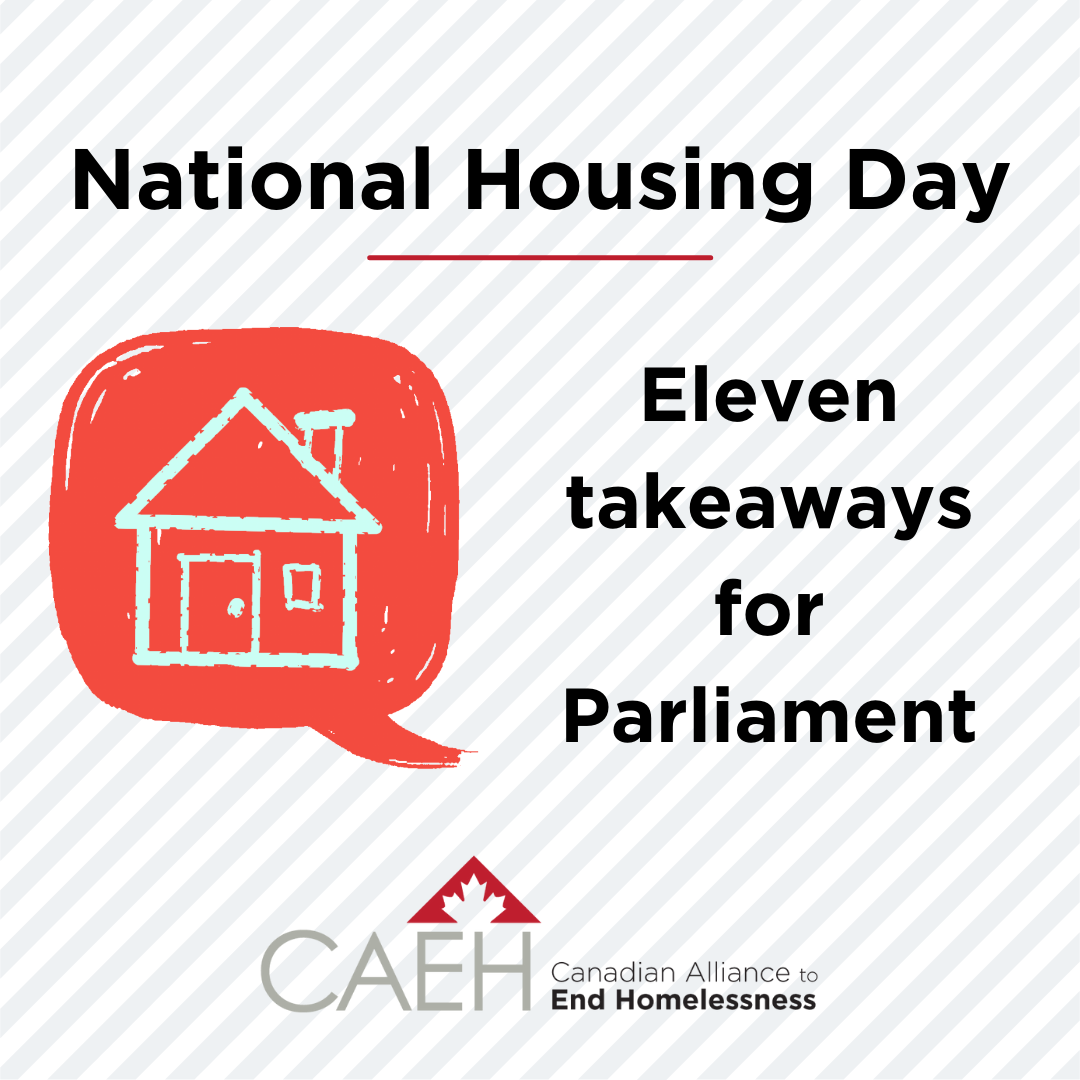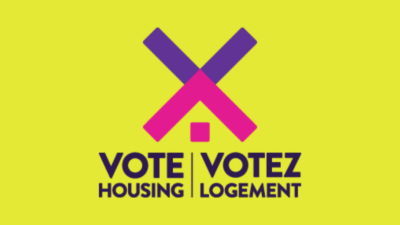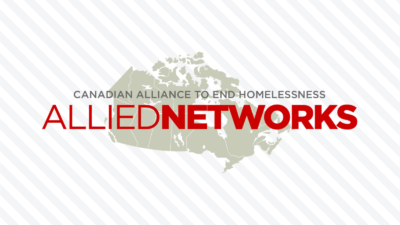Today is National Housing Day—it’s also the first day of the new Parliament. The CAEH is putting forward 11 actions the federal government can take immediately to address Canada’s housing crisis and make progress on ending homelessness.
 Today’s National Housing Day marks 23 years since homelessness was first declared a national disaster by the Toronto Disaster Relief Committee, Toronto City Council and the Federation of Canadian Municipalities.
Today’s National Housing Day marks 23 years since homelessness was first declared a national disaster by the Toronto Disaster Relief Committee, Toronto City Council and the Federation of Canadian Municipalities.
National Housing Day continues to be a time to raise awareness about the housing and homelessness crisis, but most importantly, it’s a time to celebrate progress while redoubling our efforts to achieve the policy changes, housing investments and local action needed to end homelessness.
This year is especially notable because we are 18 months into a brutal global pandemic that has underlined not only the terrifying dangers people in housing need and homelessness face, but also shown how quickly governments, communities and organizations can mobilize to house and support people experiencing homelessness if we choose to act.
COVID-19 has shown without question, if we treat homelessness like the disaster it is, rapid progress is possible.
The federal Parliament returns today – on National Housing Day – after a hard-fought summer election. Housing was a top issue in that campaign and Canadians are demanding action on our housing and homelessness crisis. Here are 11 actions the federal government can take on housing and homelessness.
11 Key Actions
1. For Indigenous by Indigenous Urban Rural and Northern Indigenous Housing Strategy
Indigenous peoples disproportionately experience homelessness. 1 in 15 Indigenous peoples in urban centres will experience it, compared to one in 128 for the general population. This is directly linked to the ongoing colonization and racism, systemic dislocation and dispossession of Indigenous peoples from their land, language and culture. It is critical to have a strategy with dedicated investments and an independent Indigenous-led governance structure and a strategy designed by Indigenous leadership.
2. Deliver a federal strategy for ending chronic homelessness
The federal government committed to the elimination of chronic homelessness over a year ago, but there is no indication yet what their strategy will be to achieve that goal. We urge the federal government to develop a strategy to end chronic homelessness with clear and measurable targets and timelines.
An essential first step in that strategy is clarity on how an end to chronic homelessness will be measured. The Canadian Alliance to End Homelessness and 39Built for Zero Canada communities are using a functional zero definition to determine if a community, which has real-time data through a high-quality By-Name List, has ended chronic or veteran homelessness. Any federal strategy to end chronic homelessness should have functional zero as the objective to equip communities with the data and systems necessary to support local action in a community-by-community approach.
At the same time, the government should continue expanding the Reaching Home program to ensure communities have the necessary operational and capacity building funds while also dedicating and prioritizing National Housing Strategy housing investments to support the ending chronic homelessness.
3. End homelessness for veterans
In June 2019, the House of Commons unanimously passed a motion calling on the federal government to set the goal of ending veteran homelessness by 2025. In the last federal budget before the election, the federal government created a $49 million pilot to provide housing and wrap-around supports to veterans. The federal government should implement the promised pilot project and expand their homelessness objectives to end veteran homelessness. A federal focus on ending veteran homelessness will not only result in rapid progress on this critical issue but will also accelerate progress on ending all forms of homelessness by putting in place the essential community infrastructure.
4. Use data to drive improvement
How can we solve a problem when we don’t understand its scope? Communities across Canada who have reduced or ended chronic or veteran homelessness are using real-time data to drive decisions and collaborate across sectors. Any federal strategy to end chronic and/or veteran homelessness must have real-time data through a By-Name Lists at its core. This data can also be used to better target federal housing investment.
5. Revamp and improve the National Housing Strategy
The National Housing Strategy was first introduced in 2017. In the time since the introduction of the NHS we’ve had new goals added (a legislated right to housing and a promise to end chronic homelessness), we’ve identified critical gaps in the strategy (e.g., lack of an Urban, Rural and Northern Indigenous Housing Strategy), we’re starting to see limitations or weaknesses in the strategy (like ‘affordable’ rents delivered by NHS programs being too high for those who need the housing), we’ve learned a lot from new initiatives (like the Rapid Housing Initiative) and we’re learning more about housing need and homelessness.
The government planned to ‘take stock’ and improve the NHS every three years. This revamp is overdue and should be completed quickly. There is no such thing as a perfect policy or pan – the key to success is data driven continuous improvement.
6. Prioritize those in greatest housing need to begin addressing inequity
Housing need disproportionately impacts Indigenous peoples, immigrants, single parent households, and seniors who are also among those most likely trapped in core housing need. Similarly, people from equity seeking communities and Indigenous peoples are dramatically overrepresented in homelessness.
There is increasing evidence that existing National Housing Strategy programs are not delivering housing that is affordable to those in core housing need and homelessness. Not only is this inconsistent with a commitment to the right to housing, and it leaves people in dire housing need without access to housing, it means Indigenous peoples, women and equity seeking communities are excluded.
Re-prioritizing the National Housing Strategy to prioritize those in the greatest housing need will be a critical step in building a more just and inclusive society and a more effective housing strategy.
7. Increase production of deeply affordable and supportive housing
An estimated 235,000 different people in a year experience homelessness and 1.7 million households are in core housing need. The NHS aims to build only 150,000 new units of housing over 10 years. This housing target is entirely insufficient to meet the demand. We urge the federal government to begin work immediately to increase the NHS targets to develop at least 300,000 deeply affordable units of non-profit and co-op housing with an additional 50,000 units of supportive housing to support the objective of ending chronic homelessness. Key to supportive housing, will be federal and/or provincial funding for the Housing First supports in supportive housing.
8. Stop the loss of affordable rental housing to financialization
The financialization of rental housing in Canada is taking affordable housing out of the market faster than it can be replaced which compounds Canada’s housing crisis. Between 2011 and 2016 over 320,000 units of rental housing were lost to financialization. The current National Housing Strategy only aims to create 150,000 units over 10 years. The government should move urgently to stop the loss of affordable housing through regulatory, tax and programmatic measures.
9. Advance the progressive realization of the right to housing
Immediately appoint the Federal Housing Advocate, which is a critical rights mechanism for the progressive realization of the right to housing. Introduce measures to combat financialization and preserve affordable market rental housing. In October 2021, the National Right to Housing Network and Women’s National Housing and Homelessness Network released a set of three research reports on what this historic legislation means and how it should be applied. These papers create a roadmap for how the right to housing can be a mechanism for the necessary systemic changes to address inequity.
10. Prevent a COVID-19 wave of new homelessness with targeted financial assistance
About 530,000 renter households in Canada pay over 50% of their income on rent. Lower rent housing is rapidly being eroded, and evictions and arrears have been growing. Over 250,000 households in Canada have accumulated over $350 million in arrears since the onset of the pandemic.
Economic pressures are growing, in part from the financialization of rental housing markets, rapid inflation of the cost of housing, and increasing income inequality.
We urge the federal government to implement a national rental assistance program to avoid a COVID wave of homelessness. This assistance could be either direct financial support to households living in market or non-market housing, or direct financial support to non-market housing providers in order to off-set the cost of rent for low-income households.
11. Embedding leadership from lived experience and equity-seeking communities
The voices and expertise of people with lived experience should be at the forefront and at the table when it comes to decisions on homelessness and housing inequity at the federal level. There must be greater participation by lived experts and equity-seeking communities if we’re going to develop meaningful solutions.
Ending homelessness is possible
There is a growing movement of communities creating the necessary proof points that show we can end homelessness when there is an alignment of political will, investments and local teams to make it happen.
Here are just a few to note over the last year alone:
|
Dufferin reduced chronic homelessness by 50%: The key initiatives that led to reducing chronic homelessness by 50% was a critical combination of support services and housing allowances. That and pivoting and becoming more flexible in how they deliver services during the pandemic. Read More. |
Medicine Hat, AB functionally ended chronic homelessness: After years of leading the way and showing what it takes to solve the homelessness crisis, Medicine Hat became the first city in Canada to achieve functional zero chronic homelessness in June. Read More. |
|
London, ON functional ended veteran homelessness: Thanks to collaboration and determination, the Canadian Alliance to End Homelessness confirmed London had achieved functional zero veteran homelessness last February. Read more. |
Guelph-Wellington reduced chronic youth homelessness 43%: Guelph-Wellington’s unwavering focus on housing youth experiencing chronic homelessness—despite the hurdles and complications thrown their way from the onset of the COVID-19 pandemic—has meant a 43% reduction in their chronic youth homelessness population. Read more. |
Actions you can take on National Housing Day
Ending homelessness in Canada comes down to more than just action from the federal government—we all have a role to play. You can start now by taking these few actions to make a difference:
|
|
|
|
|
|








